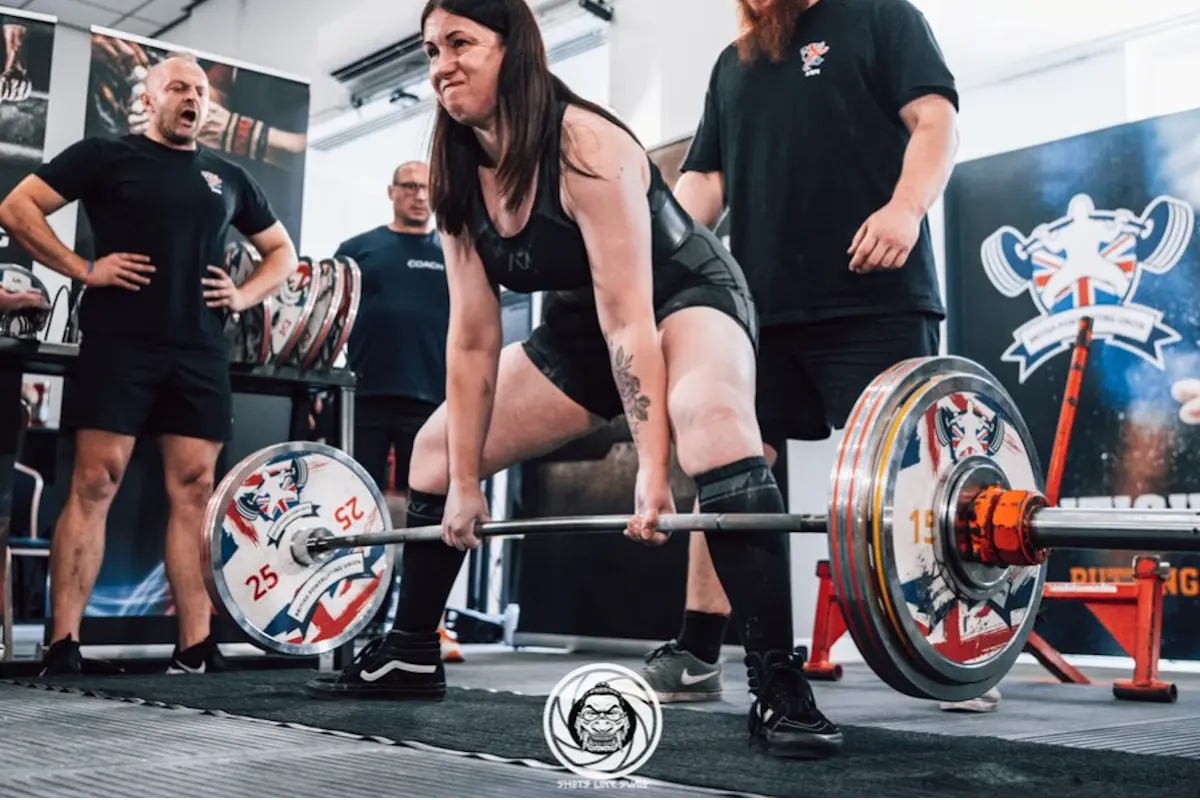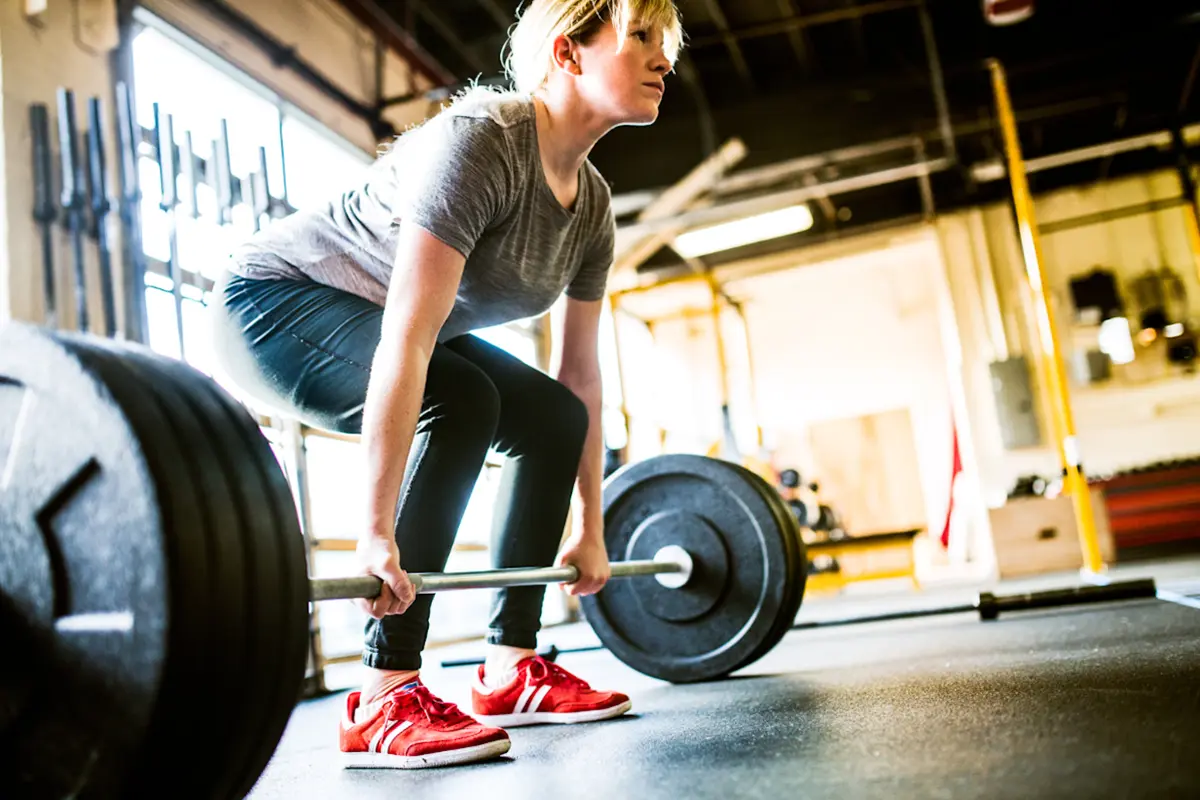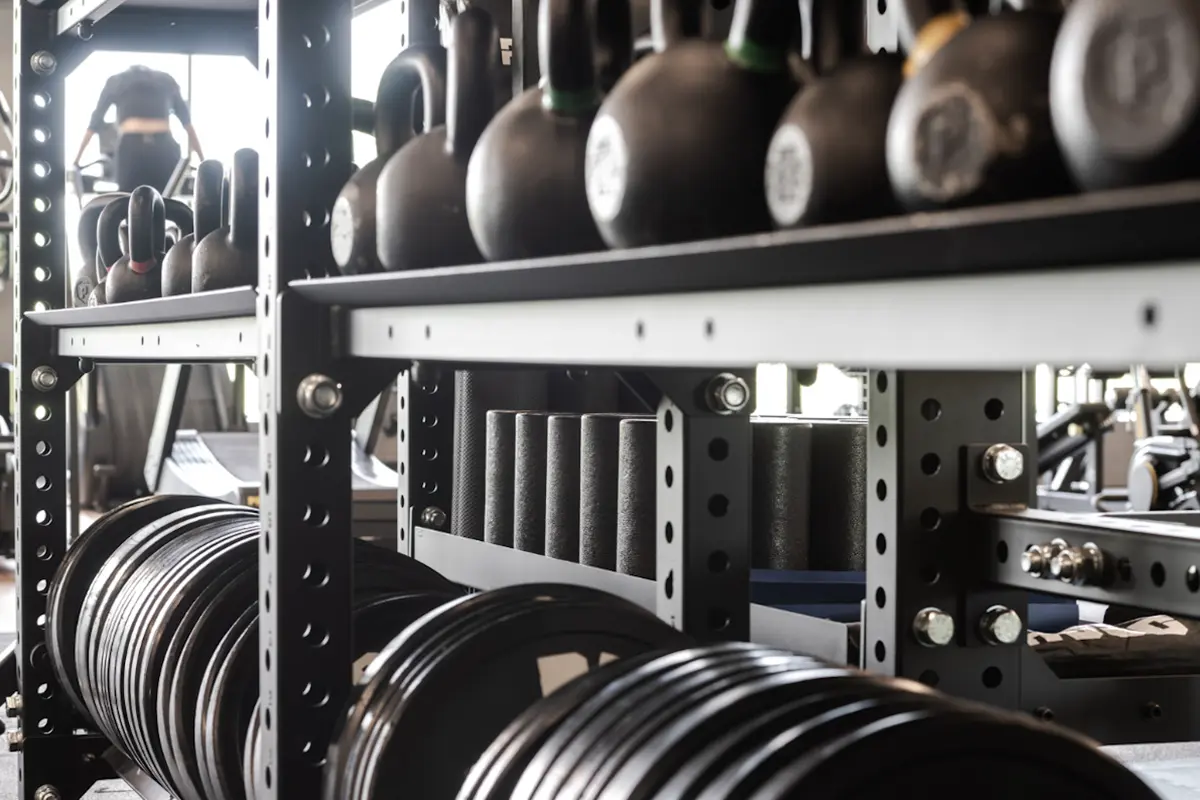Powerlifting and Menopause: Why You Should Start

What's In This Article
- Key Highlights:
- Introduction
- Hormonal Shifts During Menopause and The Impact on Health and Exercise
- The Impact of Menopause on Bone Density and Health
- Menopause and Its Specific Effects on Muscle Mass
- Physical Health Benefits of Powerlifting
- Mental Health Benefits of Powerlifting
- Tailored Powerlifting Training Strategies for Menopause
- Conclusion
- Frequently Asked Questions
- References
- Resources
Key Highlights:
- Strength training, particularly powerlifting, offers significant benefits for menopausal women. It combats muscle loss, bone density decline, and weight gain.
- Menopause causes a decline in estrogen and progesterone, affecting bone health, muscle mass, and overall well-being.
- Powerlifting exercises (squats, deadlifts, bench presses) help maintain muscle mass and bone density during menopause.
- Regular strength training can improve mood, cognitive function, and self-esteem while reducing the risk of chronic diseases.
- Tailored powerlifting strategies for menopausal women should focus on joint-friendly techniques, proper nutrition, and adequate recovery time.
- Safety measures, including proper form and gradual progression, are crucial to prevent injuries during powerlifting for menopausal women.
- Aim for 2-3 weekly strength training sessions, focusing on compound exercises that work for multiple muscle groups.
- Consult healthcare providers and consider working with certified fitness professionals when starting a strength training regimen during menopause.
Introduction
Menopause is a natural biological process that marks the end of a woman's menstrual cycle. This phase, typically occurring in women in their late 40s to early 50s, signifies a significant shift in hormonal balance, particularly a decline in estrogen levels.
The onset of menopause brings a spectrum of physical and psychological changes, ranging from altered bone density and skeletal muscle mass to fluctuations in mood and cognitive function. In the United Kingdom, currently, 15% of women aged 45-64 are prescribed hormone replacement therapy, according to government statistics (www.gov.uk).
Powerlifting, a strength sport comprising three lifts – the squat, the bench press, and the deadlift – emerges as a particularly beneficial discipline for menopausal women. Contrary to popular belief, powerlifting is not just the domain of the young and robust; it offers substantial health benefits to the menopausal demographic.
As a peri-menopausal woman myself, I can vouch for the transformative effects of powerlifting. Through consistent training, I have won four national and three international titles and lifted several British and one world record weight in my category. I often outlift people significantly younger than myself, and I have experienced dramatic physical and mental health benefits.
Hormonal Shifts During Menopause and The Impact on Health and Exercise
Menopause marks a significant hormonal shift in women, marked by reduced estrogen and progesterone levels.

- Estrogen is vital in bone density, blood pressure, cholesterol regulation, and muscle function. Hormone therapy can mitigate the risks of osteoporosis and cardiovascular disease during menopause (Greendale et al., 2019).
- Progesterone, often less discussed, also undergoes significant reduction. While known for its role in the menstrual cycle and pregnancy, this hormone impacts mood regulation and sleep quality. Progesterone decreases can contribute to mood swings and sleep disturbances commonly experienced during menopause (Smith-DiJulio et al., 2008).
The link between declining estrogen and progesterone levels and physical fitness is complex.
- Reduced estrogen levels lead to reduced muscle mass and loss of strength, making maintaining fitness challenging. This muscle loss, known as sarcopenia, accelerates during menopause, decreasing metabolic rate and increasing fat accumulation (Sipilä & Laakkonen, 2019). The decline in lean muscle tissue affects strength and increases the risk of falls and fractures due to reduced bone density.
- A tailored strength training program can be integral to maintaining health. Powerlifting's weight-bearing exercises can stimulate bone formation and combat conditions like osteoporosis (Kemmler et al., 2017). Progressive resistance training, a key element of powerlifting, helps prevent muscle mass loss in postmenopausal women (Straight et al., 2016).
- Maria Luque, a fitness expert, health science professor, menopause expert, military veteran, and busy mother, emphasizes the need to create customized exercise routines for menopausal women. She stresses the importance of understanding individual needs and challenges during menopause.
The Impact of Menopause on Bone Density and Health
Menopause is a critical period for women's bone health. Decreased estrogen levels lead to reduced bone density, increasing the risk of osteoporosis—a condition that weakens bones and raises fracture risks.
- This decline accelerates post-menopause, with women potentially losing up to 20% of their bone density in the initial years (Rizzoli et al., 2014).
- Osteoporosis, often termed a "silent disease," typically remains undetected until a fracture occurs, making prevention strategies crucial.
- Strength training, primarily through weight-bearing exercises like powerlifting, is highly recommended for maintaining bone health during menopause. Placing this stress on the bones promotes bone formation and helps slow down bone loss during this crucial time of life for a woman's health.
- The National Osteoporosis Foundation notes that powerlifting can help mitigate bone density loss, a common concern during menopause. Moreover, this form of strength training can counteract the natural decline in muscle mass and strength experienced during this life stage (Westcott, 2012).
- A study by Zhao et al. 2015 demonstrated that high-intensity resistance training significantly increased Bone Mineral Density (BMD) among postmenopausal women.

Menopause and Its Specific Effects on Muscle Mass
Menopause brings with it a natural decline in muscle mass, a condition known medically as sarcopenia. This decline in lean body mass is partly attributed to reduced estrogen levels, which are crucial in muscle maintenance and repair. The rate of muscle loss can be as high as 1% per year after age 50, significantly impacting physical strength, metabolism, and overall health (Sipilä & Laakkonen, 2019).
Powerlifting presents a targeted approach to combat this muscle loss. These compound movements engage multiple muscle groups and promote muscle growth, neuromuscular coordination, and balance.
- Squats: Squats target the quadriceps, hamstrings, glutes, and lower back, making them highly effective in building lower body strength. This exercise is particularly beneficial for menopausal women as it supports the muscles around the hips and knees, areas vulnerable to injury during this life stage.
- Deadlifts: Deadlifts work the back, glutes, hamstrings, and forearms. They are crucial for developing core strength and stability, essential for functional movements and injury prevention.
- Bench Presses: While primarily targeting the chest muscles, bench presses also engage the shoulders and triceps. This exercise contributes to upper body strength, vital for weight training and maintaining overall functional capacity, especially in lifting or pushing tasks.
The research underscores the efficacy of these exercises in preserving and enhancing muscle mass. Straight et al. (2016) found that resistance training improves muscle strength and physical performance in postmenopausal women.
Dr. Brendon Stubbs, a leading researcher at King's College London, highlights the importance of strength training for women, especially as they enter menopause. He notes that strength training can help negate the natural aging processes that lead to thinner bones and other health issues. Stubbs' research supports the broader benefits of resistance training, including improved heart health, weight management, and mental wellbeing.
Powerlifting's specific nature, focusing on progressive overload (gradually increasing the weight lifted), allows for continual muscle tissue adaptation and growth. This aspect is crucial for menopausal women, as it ensures that muscles remain challenged and engaged, countering the natural tendency towards atrophy.
Physical Health Benefits of Powerlifting
Enhanced Bone Density
- Powerlifting, involving weight-bearing exercises, is instrumental in building and maintaining bone density, mitigating the risk of osteoporosis, a common concern during menopause (Kemmler et al., 2017).
Improved Muscle Strength and Mass
- As estrogen levels decrease, so does muscle mass. Powerlifting combats this through its focus on major compound movements, aiding in preserving and increasing muscle strength and mass (Straight et al., 2016).
Weight Management
- The metabolic changes during menopause often lead to weight gain. With its high energy expenditure, powerlifting can help manage body weight and reduce the risk of obesity-related conditions (Greendale et al., 2019).
Reduced Risk of Chronic Diseases
- Regular participation in strength training activities like powerlifting can lower the risk of developing chronic diseases such as type 2 diabetes and cardiovascular disease, prevalent concerns in postmenopausal women (Beavers et al., 2013).

Mental Health Benefits of Powerlifting
Improved Mental Well-being
- Exercise is known to release endorphins, the body's natural mood lifters. Powerlifting, by setting achievable goals and providing a sense of accomplishment, can significantly improve mental well-being and reduce symptoms of depression and anxiety (Gordon et al., 2017).
Enhanced Cognitive Function
- Regular physical activity during menopause has been linked to improved cognitive function, including better memory and executive function. Engaging in a disciplined sport like powerlifting can help maintain cognitive health (Weber et al., 2013).
Stress Reduction
- The focus and concentration required in powerlifting can serve as a form of meditation, helping to reduce stress levels. This is particularly beneficial during menopause, a period often marked by increased stress and anxiety.
Increased Self-Esteem and Empowerment
- Mastering the skills required in powerlifting and witnessing physical improvements can significantly enhance self-esteem and provide a sense of empowerment. This boost in confidence is especially valuable during menopause, a time when women might face challenges to their self-image due to physical and hormonal changes.
Tailored Powerlifting Training Strategies for Menopause

Adapting powerlifting training for menopausal women is essential due to their unique physiological needs. Menopause can affect muscle mass, bone density, and strength.
When adjusting powerlifting for menopausal women, consider possible joint pain and reduced flexibility. Including exercises that enhance joint mobility and flexibility can ease discomfort and prevent injuries during training.
Safety measures should be prioritized when starting powerlifting training. Starting with lower weights and gradually progressing to heavy weights is essential to prevent strain or injury.
Adaptive Resistance Training Techniques
Managing Joint Discomfort
Menopause can lead to increased joint discomfort, partly due to hormonal changes. Adjustments such as incorporating warm-up routines with low-impact exercises and emphasizing technique over weight can help manage this discomfort. Low-impact variations of standard lifts can be beneficial (Stojanovic & Sacheck, 2018).
Addressing Reduced Recovery Rate
Hormonal changes can affect recovery rates. To accommodate this, it's advisable to allow more extended rest periods between training sessions, focus on quality sleep, and integrate active recovery techniques like stretching or yoga. Tailoring the training volume and intensity to individual tolerance levels is crucial (Daley et al., 2007).
Nutritional considerations
Adequate protein intake is essential for muscle repair and growth. In contrast, sufficient calcium and vitamin D intake are crucial for maintaining bone health, especially during this stage when women are more susceptible to osteoporosis. Hydration is also essential to preventing dehydration, which can affect workout performance and recovery.
Conclusion
While challenging, the journey through menopause presents an opportunity for women to embrace and benefit from strength training exercises and the discipline of powerlifting. This article has highlighted vital considerations and strategies that make powerlifting feasible and highly beneficial during menopause.
Melanie McQuaid, a professional triathlete and five-time world champion, continues to compete at an elite level despite being in her late 40s and transitioning through menopause. She emphasizes the importance of strength training in maintaining performance. McQuaid's achievements, including finishing 3rd at Ironman Wisconsin and 5th at Ironman Lake Placid, demonstrate that with the proper training and focus, women can continue to excel in sports during menopause.
The message is clear and encouraging for women considering powerlifting during menopause. With the right approach and adaptations, powerlifting can be a powerful ally in navigating the physical and mental changes of menopause.
It offers a path to maintain and enhance health, vitality, and well-being during this transformative phase of life. Embracing powerlifting during menopause can lead to a stronger, more empowered self.
Frequently Asked Questions
Why is strength training important during menopause?
Strength training is crucial during menopause because it helps maintain muscle mass, increase bone density, boost metabolism, and improve overall body composition. These benefits can counteract some physical changes associated with menopause, such as muscle loss and increased risk of osteoporosis.
How often should I do strength training exercises during menopause?
Aim for at least 2-3 strength training sessions per week, with at least one day of rest between sessions. This frequency allows for adequate muscle recovery while providing consistent benefits. As you progress, you may increase to 3-4 sessions per week if desired.
What exercises should I include in my strength training routine?
Focus on compound exercises that simultaneously work for multiple muscle groups, such as squats, lunges, push-ups, rows, and deadlifts. Include exercises for all major muscle groups: legs, chest, back, shoulders, and arms. Don't forget core-strengthening exercises like planks and bridges.
Can strength training help with menopausal symptoms like hot flashes and mood swings?
While not a cure-all, strength training can potentially help alleviate some menopausal symptoms. Regular exercise, including strength training, has been shown to improve mood, reduce stress, and potentially decrease the frequency and intensity of hot flashes in some women.
Is it safe to start strength training if I've never done it before?
Yes, starting strength training at any age is safe, including during menopause. However, it's important to begin gradually and with proper form. Consider working with a certified fitness professional who can design a program tailored to your needs and teach you the correct techniques. Always consult your healthcare provider before starting any new exercise regimen, especially if you have any pre-existing health conditions.
References
- Beavers, K. M., Ambrosius, W. T., Nicklas, B. J., & Rejeski, W. J. (2013). Independent and combined effects of physical activity and weight loss on inflammatory biomarkers in overweight and obese older adults. Journal of the American Geriatrics Society, 61(7), 1089-1094.
- Daley, A. J., Stokes-Lampard, H., & Macarthur, C. (2007). Exercise to reduce vasomotor and other menopausal symptoms: a review. Maturitas, 57(1), 6-19.
- Gordon, B. R., McDowell, C. P., Hallgren, M., Meyer, J. D., Lyons, M., & Herring, M. P. (2017). Association of resistance exercise training efficacy with depressive symptoms: meta-analysis and meta-regression analysis of randomized clinical trials. JAMA Psychiatry, 75(6), 566-576.
- Greendale, G. A., Sternfeld, B., Huang, M. H., Han, W., Karlamangla, A. S., & Seeman, T. (2019). Changes in body composition and weight during the menopause transition. JCI Insight, 4(5), e124865.
- Kemmler, W., von Stengel, S., Engelke, K., & Kalender, W. A. (2017). Exercise, osteoporosis and bone geometry. Sports, 5(2), 29.
- Paddon-Jones, D., & Leidy, H. (2014). Dietary protein and muscle in older persons. Current Opinion in Clinical Nutrition and Metabolic Care, 17(1), 5-11.
- Rizzoli, R., Stevenson, J. C., Bauer, J. M., van Loon, L. J., Walrand, S., & Kanis, J. A. (2014). The role of dietary protein and vitamin D in maintaining musculoskeletal health in postmenopausal women: A consensus statement from the European Society for Clinical and Economic Aspects of Osteoporosis and Osteoarthritis (ESCEO). Aging Clinical and Experimental Research, 26(5), 575-586.
- Sipilä, S., & Laakkonen, E. K. (2019). Muscle performance and physical activity as predictors of future quality of life in older age. Current Opinion in Clinical Nutrition and Metabolic Care, 22(1), 45-50.
- Smith-DiJulio, K., Woods, N. F., & Mitchell, E. S. (2008). Well-being and menopausal transition: Rethinking the role of progesterone. Journal of Women's Health, 17(7), 1139-1150.
- Stojanovic, M. D., & Sacheck, J. M. (2018). Inflammation and exercise in the aging population. Immunology and Cell Biology, 96(2), 132-140.
- Straight, C. R., Brady, A. O., & Evans, E. M. (2016). Sex-specific relationships of physical activity, body composition, and muscle quality with lower-extremity physical function in older men and women. Menopause, 23(10), 1082-1089.
- Weaver, C. M., Gordon, C. M., Janz, K. F., Kalkwarf, H. J., Lappe, J. M., Lewis, R., ... & Wallace, T. C. (2016). The National Osteoporosis Foundation's position statement on peak